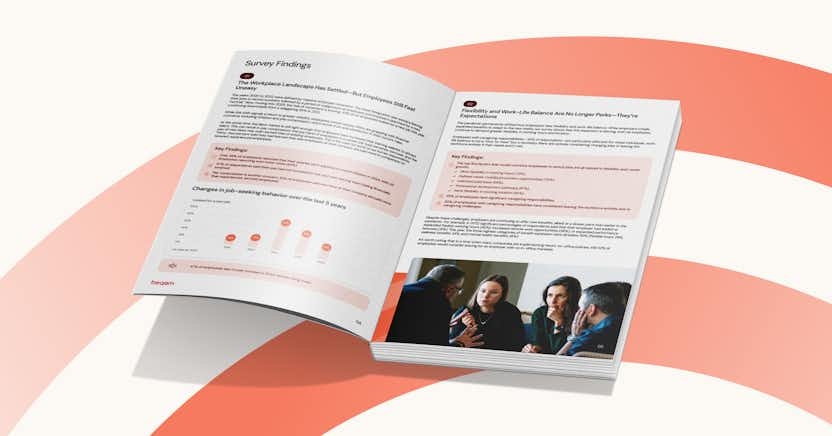8 Ways to Make Your Next Compensation Cycle Post-Mortem Easier: A Guide for Financial Services

If you’re in HR in financial services, you’ve probably just finished your compensation cycle. With the experience fresh in your mind, and with your stakeholders eager to give input, now is the perfect time to take stock and reflect on what could be done better next time. But how do you conduct an effective post-mortem without finding yourself even more exhausted, and with a massive to-do list? Having the right framework to assess what worked well and what could have been better can pave the way for a smoother comp cycle the next time around. Ultimately, you’ll wind up with greater efficiency and a better experience for all stakeholders.
In our many years of experience managing comp cycles in large financial services organizations, we have seen our share of missed opportunities. To keep things in proper perspective, we recommend viewing your post-mortem through three lenses: people, process, and technology. Below are some key considerations in these important domains.
People
Roles and Responsibilities. It’s important to make sure that the right resources are aligned to the activities occurring during a comp cycle. An obvious reason is so that no tasks fall through the cracks, but you should also be asking if the right people are doing the right tasks. For example, do you have appropriate accountability between regional and functional HR stakeholders to ensure managers are properly supported throughout the process?
Compensation Operations. Another thing to consider is whether it is possible to standardize processes and common requests (e.g. security setup, manager hierarchy, first-level support, etc.) and move support to a central delivery team. This can help reduce redundant efforts across compensation analysts and HR Business Partners who support different business units. In a global organization, you should also be thinking about how you can follow the sun with support in multiple time zones to get work done most efficiently.
Governance. It’s important to establish which stakeholders or groups of people have the final say on important activities that need to be documented and memorialized. Some timely examples are the monitoring and assessment of pay outcomes related to pay for performance, pay equity, or regulatory adherence. Determining upfront the who/what/when will save you time when important decisions need to be made.
Process
Identifying inefficiencies. It’s very common, in our experience, for organizations to confuse process inefficiencies with technology limitations. It’s easy to say “our system doesn’t do X,” but is X clearly part of your process? Before evaluating any technology enhancements, it’s important to reevaluate your process and ask yourself if anything needs to change. One way to make business process evaluation easier is to diagram the process, which will help you very quickly visualize where the inefficiencies lie. Maybe there are too many handoffs, or not enough controls. With the right process identified, it’s much easier to determine if and how the technology needs to change. Also, a well-documented process will gain you brownie points during an internal audit review.
Standardization. It’s common in financial services to offer bespoke services to some or all of your internal clients. Perhaps you create custom manual reports for a specific business head after every comp round, or maybe you accommodate all business unit nuances and matrices into the manager hierarchy. It may be time to ask which of these activities truly adds value given the time and effort needed to sustain them. It may not be possible to stop accommodating all of your business unit quirks into the manager hierarchy, but maybe it’s possible to standardize and automate the set of metrics that all managers in the process see, so that robust insights are democratized across the organization. When all managers are being measured on the same set of metrics, it makes driving the right behaviors much easier. It’s important to note that the approach to standardizing must involve some change management: if it’s not clear to your stakeholders why the change is being made and how it benefits them, your efforts may not be successful.
Communication. Your processes are only as good as how well they are documented and followed. Spend some time reviewing your process documentation and communications to ensure that they are easily understandable to your stakeholders. The way you communicate processes can also vary from stakeholder to stakeholder — think about the method of communication to ensure that the greatest number of users will review and follow them. If you have tight processes that nobody is following, have another look at how you are communicating and enabling people to follow them. Perhaps a training at the start of the comp cycle would benefit HRBP users who predominantly experience the comp cycle once a year. Or maybe a weekly newsletter to your comp colleagues can help ground everyone in what’s happening from week to week, especially if some elements of the process are being handled by a central team.
Technology
Prioritization and Business Case. Technology to digitize your compensation processes is definitely key, but one thing we’ve learned in many years of managing comp systems is that prioritization needs to be a priority. It’s easy to become an expert at prioritization if you have a clear decision-making model for what gets done, including consideration for cost and effort versus the organizational impact. When this model is articulated to your stakeholders, they may even begin to self-manage their expectations. When evaluating a technology change, you may want to consider how many users benefit from it, what efficiencies it brings, and what the consequences are if the change doesn’t get made (i.e. what are the financial, reputational, and economic risks of doing nothing?). A points system for scoring these dimensions can help put additional rigor and objectivity around the process.
Better adoption. A key consideration of your technology program should be user adoption. For example, have you thought about how to break old habits like reliance on spreadsheets and turn that into effective system usage? Successful user adoption goes beyond shiny technology alone and requires compelling change management and training. It’s also important to think about how user experience and feedback can be leveraged to drive impactful technology enhancements — focus groups, surveys and anecdotal feedback from friendly stakeholders can provide insights that help you prioritize technology enhancements. This will also help the organization realize its ROI on its technology investment.
An effective post-mortem will incrementally improve your next compensation cycle
Taking the time to sit down with your team to analyze the recent comp cycle is a worthwhile investment as long as you have the right framework to guide you to make it easier. Identifying, prioritizing and making the necessary changes in time for the next comp cycle will pay dividends in efficiency, accuracy, and stakeholder engagement — not to mention reduced stress for the HR and compensation teams!
Want to make your next comp cycle easier and more effective? Check out beqom's Comp Cycle Post-Mortem Playbook, to learn the tools and structure needed to turn lessons learned into future improvements—to make your next comp cycle a whole lot smoother.Would you like to find out more? Contact beqom today to speak to one of our compensation experts.















